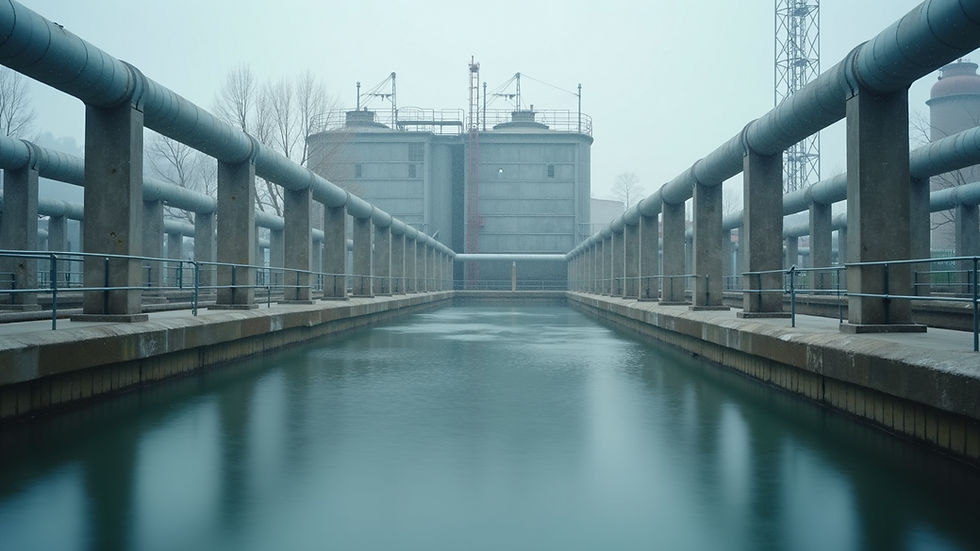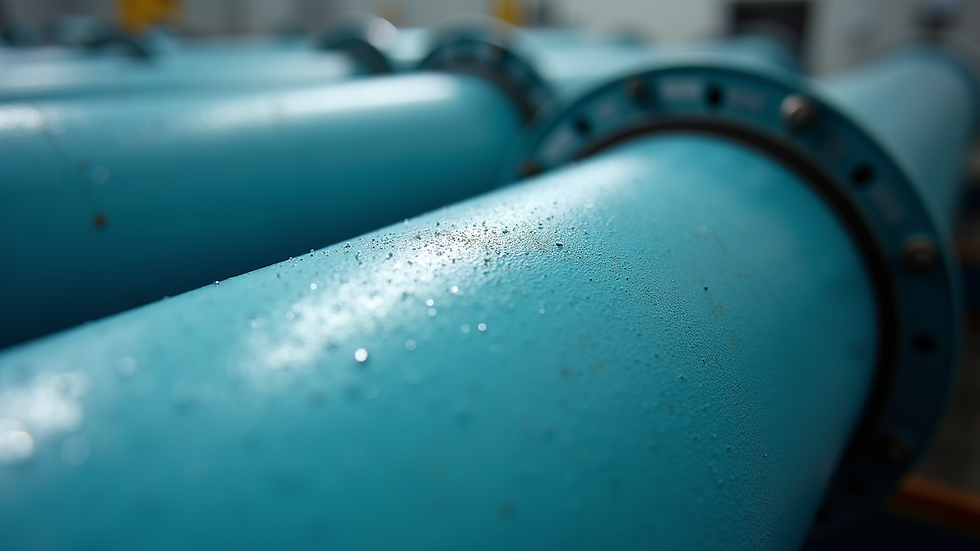Latest Advancements in Sewage Treatment Technologies in India
- palwinder kaur
- Aug 9
- 3 min read
India is witnessing rapid urbanization and industrial growth, which has increased the demand for efficient sewage treatment solutions. Traditional methods of sewage treatment are no longer sufficient to meet the growing environmental challenges. As a result, the country is adopting modern sewage treatment methods that are more effective, sustainable, and eco-friendly. These advancements not only help in reducing pollution but also promote water reuse and resource recovery.
Modern Sewage Treatment Methods Transforming India’s Water Management
India’s water bodies have been under severe stress due to untreated or partially treated sewage discharge. To combat this, several modern sewage treatment methods have been introduced across the country. These methods focus on improving the quality of treated water, reducing sludge generation, and minimizing energy consumption.
Some of the key modern methods include:
Membrane Bioreactors (MBR): Combining biological treatment with membrane filtration, MBR systems provide high-quality effluent suitable for reuse.
Advanced Oxidation Processes (AOP): These use powerful oxidants to break down complex organic pollutants that conventional methods cannot remove.
Sequencing Batch Reactors (SBR): These reactors treat wastewater in batches, allowing better control over aeration and settling phases.
Anaerobic Digestion: This process treats sludge to produce biogas, which can be used as a renewable energy source.
Constructed Wetlands: Mimicking natural wetlands, these systems use plants and microorganisms to treat sewage in an eco-friendly way.
These technologies are being implemented in various cities and industrial zones, significantly improving the quality of treated water and reducing environmental impact.

What is Advanced Treatment of Wastewater?
Advanced treatment of wastewater refers to processes that go beyond primary and secondary treatment to remove contaminants that are difficult to eliminate. This includes nutrients like nitrogen and phosphorus, pathogens, heavy metals, and emerging pollutants such as pharmaceuticals and microplastics.
In India, advanced treatment is gaining importance due to stricter environmental regulations and the need for water reuse in agriculture and industry. Some common advanced treatment technologies include:
Ultrafiltration and Nanofiltration: These membrane processes remove suspended solids, bacteria, and viruses.
Activated Carbon Adsorption: Used to remove organic compounds and odors.
Chemical Precipitation: Helps in removing heavy metals and phosphates.
UV Disinfection: Provides effective pathogen removal without chemical residues.
By integrating these advanced processes, wastewater treatment plants can produce effluent that meets high-quality standards, making it safe for discharge or reuse.

Benefits of Implementing Advanced Sewage Treatment Technologies
The adoption of advanced sewage treatment technologies in India offers multiple benefits:
Improved Water Quality: Enhanced removal of pollutants ensures cleaner water bodies and safer reuse options.
Resource Recovery: Technologies like anaerobic digestion convert waste into biogas and nutrient-rich fertilizers.
Energy Efficiency: Modern plants use energy-saving equipment and renewable energy sources.
Reduced Environmental Impact: Lower sludge production and better pollutant removal reduce soil and water contamination.
Compliance with Regulations: Helps industries and municipalities meet stringent discharge standards.
For example, the city of Pune has implemented MBR technology in its sewage treatment plants, resulting in significant improvements in effluent quality and enabling water reuse for landscaping and industrial purposes.
Challenges and Future Prospects of Sewage Treatment in India
Despite the advancements, India faces several challenges in sewage treatment:
Infrastructure Gaps: Many cities lack adequate sewage networks and treatment capacity.
High Capital Costs: Advanced technologies require significant investment.
Operational Expertise: Skilled personnel are needed to manage complex treatment systems.
Public Awareness: Encouraging water conservation and pollution prevention remains critical.
To overcome these challenges, the government and private sector are collaborating on innovative solutions such as decentralized treatment units, smart monitoring systems, and public-private partnerships.
Looking ahead, the integration of digital technologies like IoT and AI for real-time monitoring and process optimization will further enhance the efficiency of sewage treatment plants. Additionally, promoting circular economy principles by recovering water, energy, and nutrients will make sewage treatment more sustainable.

Steps to Support Sustainable Sewage Treatment Practices
Individuals, industries, and policymakers can contribute to sustainable sewage treatment by:
Reducing Water Usage: Conserving water reduces the volume of sewage generated.
Segregating Waste: Proper disposal of hazardous and solid waste prevents treatment plant clogging.
Investing in Technology: Supporting the adoption of modern treatment methods.
Promoting Awareness: Educating communities about the importance of sewage treatment.
Encouraging Reuse: Using treated water for irrigation, industrial processes, and groundwater recharge.
By adopting these practices, India can ensure cleaner water resources and a healthier environment for future generations.
India’s journey towards modern sewage treatment methods is a critical step in addressing water pollution and scarcity. With continued innovation, investment, and community involvement, the country can achieve sustainable water management and environmental protection.



Comments